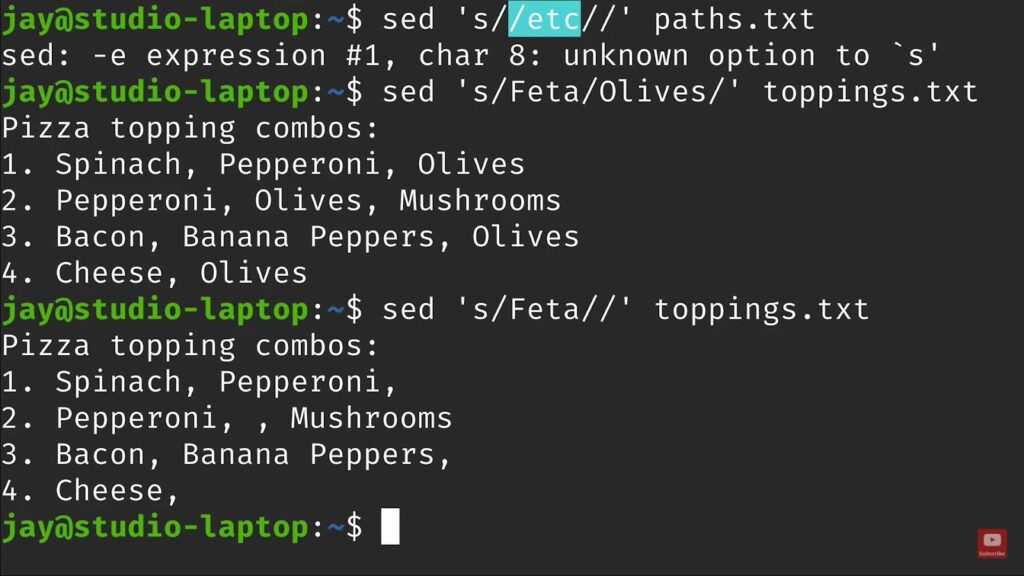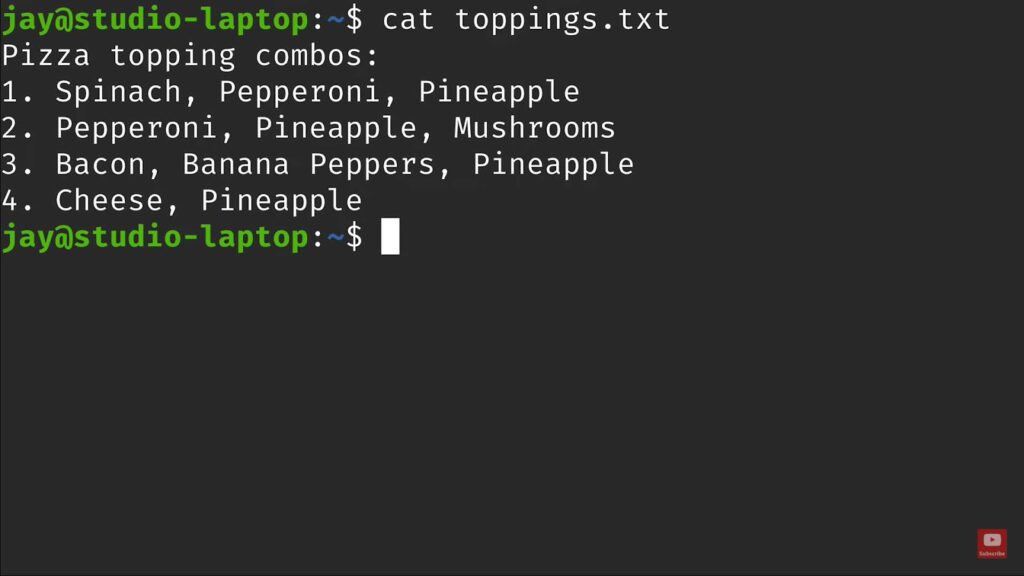The acronym SED in the realm of Linux commands stands as a testament to “stream editor.” This versatile tool serves as a means to perform a myriad of operations on files, encompassing tasks such as searching, locating, replacing, appending new text, and expunging content upon identifying a specific pattern.
Among the array of functions at its disposal, the most prevalent employment of the SED command finds itself within the repertoire of system administrators and engineers. Their daily routine often includes the task of text substitution or the search and replacement of textual content.
One might ponder: why deem the SED command indispensable when text manipulation can be expeditiously accomplished through vi or vim editors? The rationale behind this preference lies in the SED command’s inherent capability to execute these operations seamlessly without necessitating the opening of the file itself. This becomes paramount when grappling with data within a script or amidst an extensive process, where text replacement constitutes but a minor facet of the overarching automated endeavor.
Enhancing Your Text Editing Skills with Sed
When it comes to text manipulation in the world of Linux and Unix, the sed command stands as a powerful and versatile tool in your arsenal. In this comprehensive guide, we’ll dive into the intricacies of using sed to replace and substitute strings in files, unveiling its capabilities and sharing expert tips for efficient text editing.
Grasping the Fundamentals of Text Substitution
Text substitution is the skillful process of finding a particular sequence of characters in a document and substituting it with a different one. The ‘sed’ command stands out in this domain, providing an effortless method to modify textual data without the need to access the file directly.
Example: Basic String Replacement
Let’s use a practical example with a file named “linuxconcept.txt” that contains the following text:
Linux is the most popular operating system. Linux is an open-source and free OS.
Learn Linux operating systems.
Which one do you choose for learning Linux or UNIX?
Linux is easy to learn. Linux is a multiuser OS. Learn Linux. Linux is a powerful OS.
Now, suppose we want to replace all occurrences of “Linux” with “UNIX” using sed. The command would look like this:
$sed ‘s/Linux/UNIX/’ linuxconcept.txt
Output:
UNIX reigns as the dominant operating system, while Linux stands out as a complimentary open-source and freely available OS. Dive into the world of these operating systems. Which will you decide to master: UNIX or Linux? While UNIX is straightforward to grasp, Linux offers a multi-user environment and robust capabilities.
In the provided command explanation:
- The character ‘s’ designates the sed command for string substitution;
- The ‘/’ symbol acts as a boundary marker;
- “Linux” represents the text we’re seeking out;
- “UNIX” is the designated substitute.
Helpful Hint: For Multiple Replacements in a Single Line
By its standard settings, sed will only alter the initial appearance of a string in a given line. If you aim to modify every instance within a line, incorporate the global (g) substitution marker:
$sed 's/Linux/UNIX/g' linuxconcept.txtResult:
UNIX reigns as the dominant operating system. UNIX stands out as an open-source and freely available OS. Immerse yourself in UNIX systems. Which will you decide to master: UNIX or UNIX? UNIX is accessible for newcomers. UNIX supports multiple users. Dive into UNIX. UNIX boasts impressive strength.
Deep Dive into String Alteration Skills:
Pairing sed with Regular Expressions:
sed isn’t confined to basic text swaps; it’s also compatible with regular expressions. This compatibility enables a richer range of text modifications. Here are some intricate examples for your reference:
1. Replacing IP Addresses
To replace IP addresses with “XXX.XXX.XXX.XXX,” you can use:
$sed 's/\([0-9]\{1,3\}\.\)\{3\}[0-9]\{1,3\}/XXX.XXX.XXX.XXX/g' file.txt2. Removing HTML Tags
To remove HTML tags from a file, try:

$sed 's/<[^>]*>//g' file.html3. Backing Up Your Files
Before performing extensive string replacements with sed, it’s wise to create a backup of your original file. Use the -i option to edit files in-place while preserving a backup:
$sed -i.bak 's/Linux/UNIX/g' linuxconcept.txtThis command replaces “Linux” with “UNIX” in “linuxconcept.txt” and creates a backup file called “linuxconcept.txt.bak.”
Conclusion
With sed in your toolkit, you have a powerful ally for text manipulation in Linux and Unix environments. Whether you’re making simple substitutions or delving into the world of regular expressions, sed empowers you to transform text efficiently and effectively. Remember to tread carefully, always back up your files, and explore the vast possibilities that sed offers for text editing mastery.
